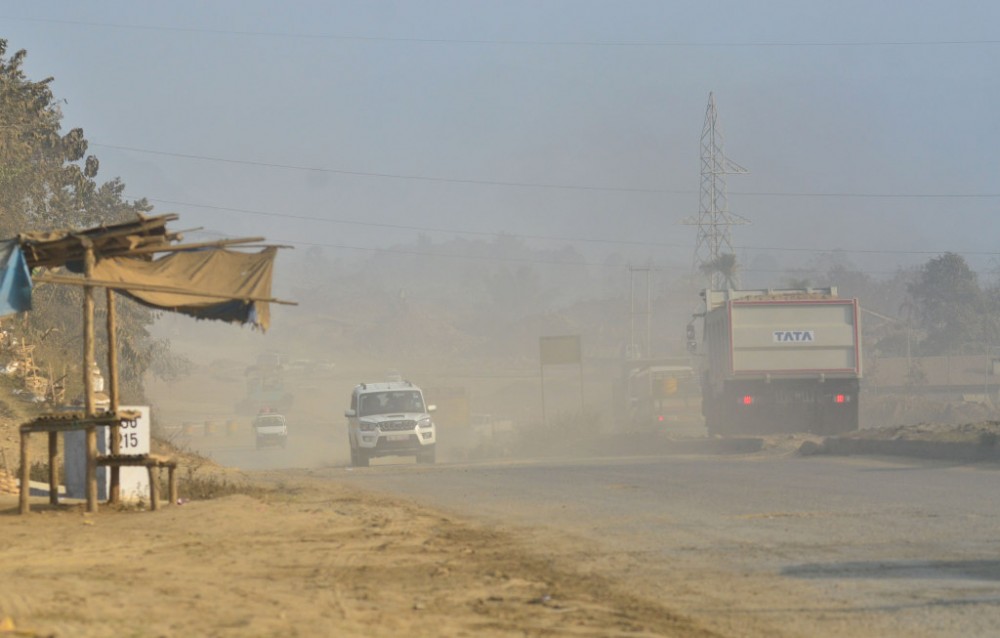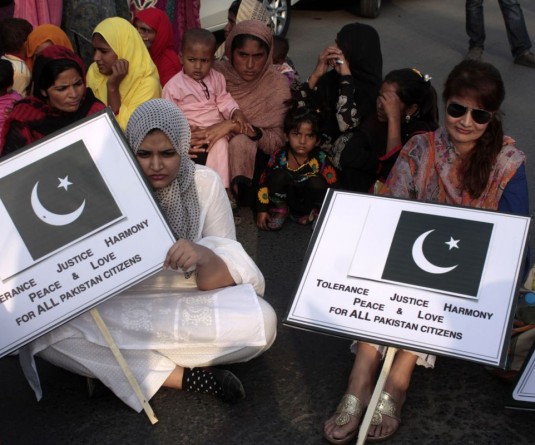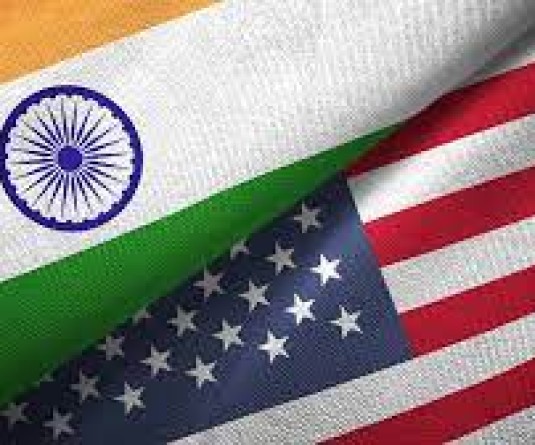A constant surge of dust kicked up by vehicles envelopes the air on the highway at Kukidolong, near Jharnapani. (Morung File Photo | For representational purpose)

Geneva, September 22 (AP): The harmful health effects of air pollution kick in at lower levels than previously thought, the World Health Organization said Wednesday as it set a new standard for policymakers and the public in the first update of its air quality guidelines in 15 years.
The UN health agency released its revised guidance as climate change is a leading topic at the UN General Assembly in New York. Chinese President Xi Jinping announced Tuesday that China will no longer fund power plants fired by coal, which generates several of the pollutants covered by the guidelines.
Since the last update of the WHO recommendations, better monitoring and science have cleared up the global picture about the effects of six major air pollutants on human health. According to the agency, 90 per cent of the world's people already live in areas with at least one particularly harmful type of pollutant.
There is nothing more essential for life than air quality," WHO Director-General Tedros Adhanom Ghebreyesus told reporters. And yet, because of air pollution, the simple act of breathing contributes to 7 million deaths a year. Almost everyone around the world is exposed to unhealthy levels of air pollution.
Air pollution is now comparable to other global health risks like unhealthy diets and smoking tobacco, WHO said. It is recognized "as the single biggest environmental threat to human health, Dr. Dorota Jarosinska, WHO Europe programme manager for living and working environments, said.
The guidelines, which are not legally binding and intended as a reference for policymakers, advocacy groups and academics, change the advised concentrations of six pollutants known to have impacts on health: two types of particulate matter known as PM 2.5 and PM 10, as well as ozone, nitrogen dioxide, sulfur dioxide and carbon monoxide.
The guidelines could also send a message to the wider public about lifestyle and business choices - whether it's driving cars and trucks, disposing of garbage, working in industrial jobs or farming.
WHO says the main human-generated sources of air pollution can vary geographically but include the energy and transportation sectors, as well as waste dump sites and home cooking and heating. It advised people to do their part by changing their lifestyles not running car engines uselessly; avoiding use of plastics that could end up being incinerated; and walking, riding bikes or using public transportation to get to work.
We hope the tighter standards will draw attention to just how critical clean air is for human and ecosystem health," Jessica Seddon, global lead for air quality at the World Resources Institute, said. The difficulty will come in making the WHO guidelines meaningful for the average person going about their day.
While wealthy countries in Europe, Asia and North America have made strides in improving air quality in recent years, WHO says globally more than 90 per cent of the world population breathes air with PM 2.5 concentrations that exceed the recommended levels in its last guidelines, published in 2006.
Such particles can penetrate deep into the lungs and enter the bloodstream, resulting in both respiratory and cardiovascular impacts. Air pollution has been linked to heart disease, diabetes, cancer, and early death, and recent evidence has suggested negative effects on pregnancy, cognitive development in kids, and mental health, experts say.
The new guidelines set or revise downward recommended air pollution levels for nearly all of the six particles both on a daily and annual basis. For example, they slashed the PM 2.5 recommendation on an annual basis to 5 micrograms per cubic meter, down from 10 previously.






